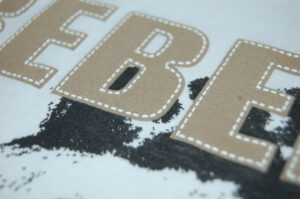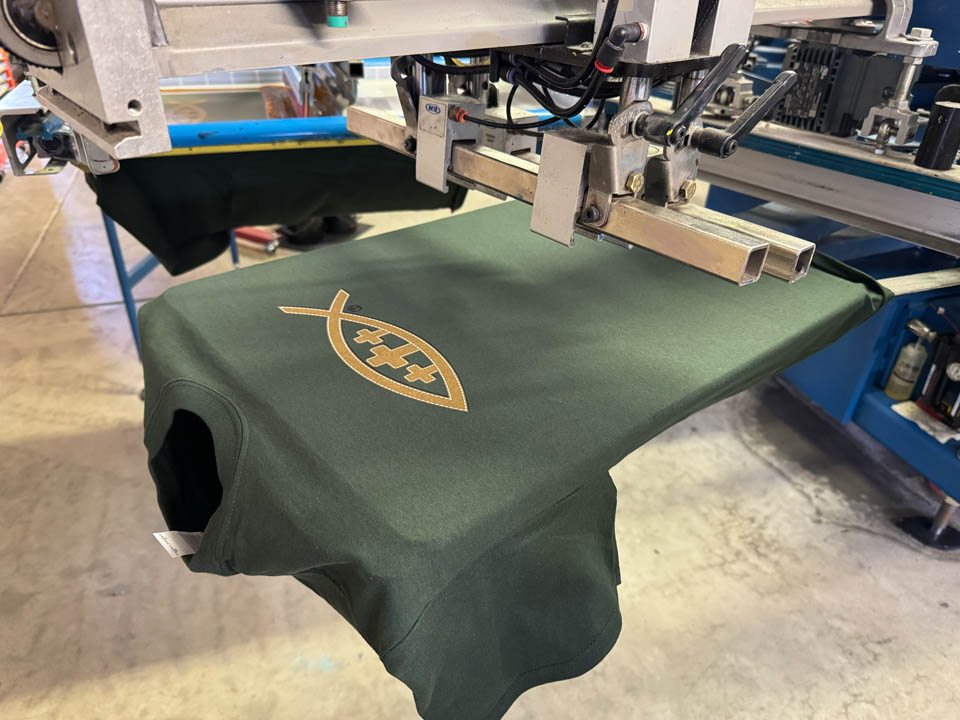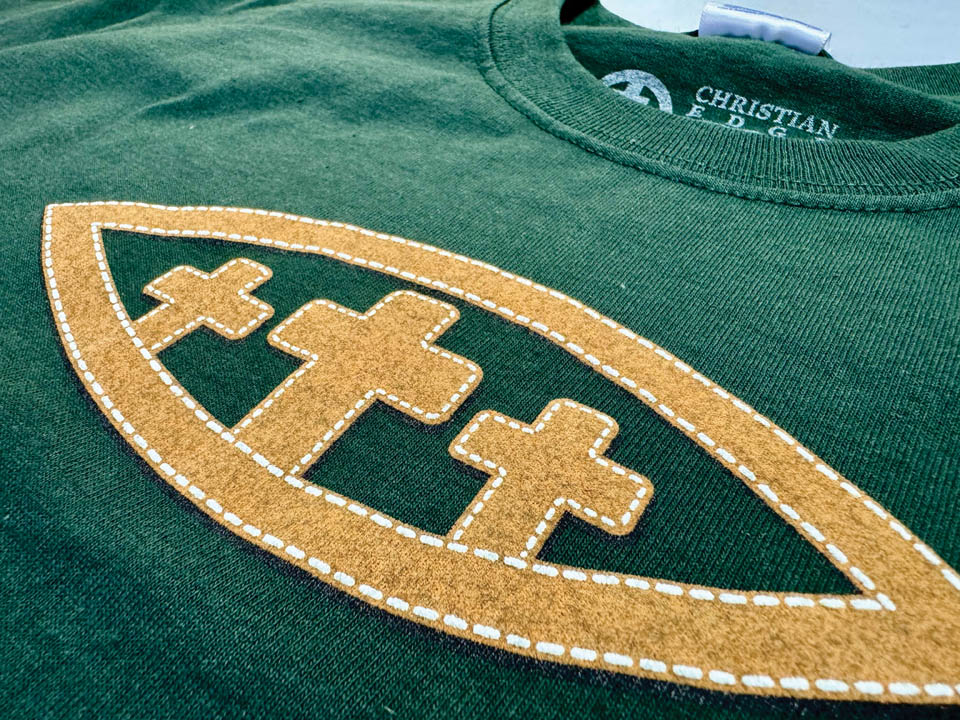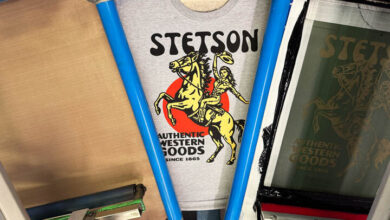As you may have read in last month’s issue, our company owns a clothing brand known as Christian Edge Apparel. This is where we provide clothing for outreach programs for churches, schools, missions, youth programs, and other organizations. In last month’s magazine, we shared how we refreshed a decade-old T-shirt design. This month we’re also working on a Christian Edge Apparel simulated-suede project. I know, I know — we just did the religious thing last issue. But, if you have to double down on something …
Let’s start with some heavy Christian history here. The Greek word for fish, “ichthys” or “ichthus,” became an acrostic (similar to an acronym explained as a composition in which certain letters form words.) “Iesous Christos Theou Huios Soter,” which translates to “Jesus Christ, Son of God, Savior.” It is symbol consisting of two intersecting arcs, the ends of the right side extending beyond the meeting point to resemble the profile of a fish.
Dating back the early second century, during Roman persecution, early Christians used the fish symbol as a way to secretly recognize each other, drawing one arc of the fish and having another person complete it. The symbol is linked to various biblical events, including the Holy Eucharist, the miraculous catch of fish and the feeding of the multitudes. Fish are mentioned throughout the Gospels as well. The ichthys symbol is still used today as a way to express faith and affiliation with Christianity. While the traditional ichthys is a simple fish shape, there are variations.
Simulated suede
 For decades, we have offered a screen-printed technique that looks and feels remarkably like real suede with stitching. The real thing, while available, even as a transfer, is far less cost effective for larger runs and lead times can be prohibitive. The next best thing is to simulate it using screen printing. We always say, “If you can make something look like something it isn’t, it always works!”
For decades, we have offered a screen-printed technique that looks and feels remarkably like real suede with stitching. The real thing, while available, even as a transfer, is far less cost effective for larger runs and lead times can be prohibitive. The next best thing is to simulate it using screen printing. We always say, “If you can make something look like something it isn’t, it always works!”
The design we wanted to do was an ichthys, or fish as we will call it going forward, with three crosses. After creating our basic shapes in Adobe Illustrator, which will be the suede, we selected the fish and copied and pasted it in front. Then we added a stroke color of white to it. Opening our stroke options, we changed the weight to 2.25pt, chose a round cap so the edges would be blunt. For the corners we selected a round joint.
Now, here is the real magic for those stitches. After we turned on the dashed line, to vary the stitch size and to make it appear more realistic we set the first dash at 5pt, the first gap to 3pt, 6pt on the second dash, and 2pt on second gap and so on. Once we had simulated stitching shapes, we needed to offset the path, so it followed the inner edge. With our stroke selected, we went to effect, selected the path menu and then to the offset path menu. We set it to -0.0601, the joints to miter with limit of 4. -.06 was just too predictable for our liking.
We repeated this process with the three crosses on the inside with settings slightly smaller. For the final effect, we went to the original suede fish and cross outline, copied it, pasted it back and offset it to the lower left to make a drop shadow. This visually helped set the suede up off the shirt and make it additionally convincing. Since we built all of this on layers in spot colors and in Illustrator, it was already separated and ready for output.
We outputted on CTS (computer to screen) the black on a 305 tpi (threads per inch) with a pretty thin stencil for the softest hand possible. The black ink was cut 80%. We mixed the suede ink to a brown color we liked using natural suede base and it went on a 156 with a standard 14% EOM (emulsion over mesh).
Finally, the stitch screen would be white puff with just a touch of brown PC (pigment concentrate) to cream it up a bit on a 110 coated using a high solids pure photopolymer emulsion for a thicker ink deposit to leave that texture so we could feel the stitching tactilely. We exposed, developed, dried, taped, and inspected the screens after imaging. Three screens total.

Using the preregistration fixture on press made set up a breeze. Print order was soft black first using a 75/90/75 triple ply dual durometer squeegee. Then the suede, followed by a flash and a cool, and finally the puff went down last — both employing a bit softer 65/90/65s. First strike off was perfect at the end of the belt! The black was so soft it had a water-based feel; the suede was brown and fuzzy, and the puff stitch rose in the dryer for just the right height to feel almost like stitches.
We ran this image on forest green, which worked really well. We had to manage the heat after the flash and in the dryer. We had to just gel (dry to the touch) the suede ink on press. Too much heat and that ink would blow and fuzz up on press causing it to fall in the dryer and destroying the effect. The puff would come up just right in the dryer if all went well and it did.
The ichthys, or “Jesus fish” is a symbol, originally used by early Christians as a secret identifier, and now is commonly seen on bumper stickers, coffee cups, and apparel.




